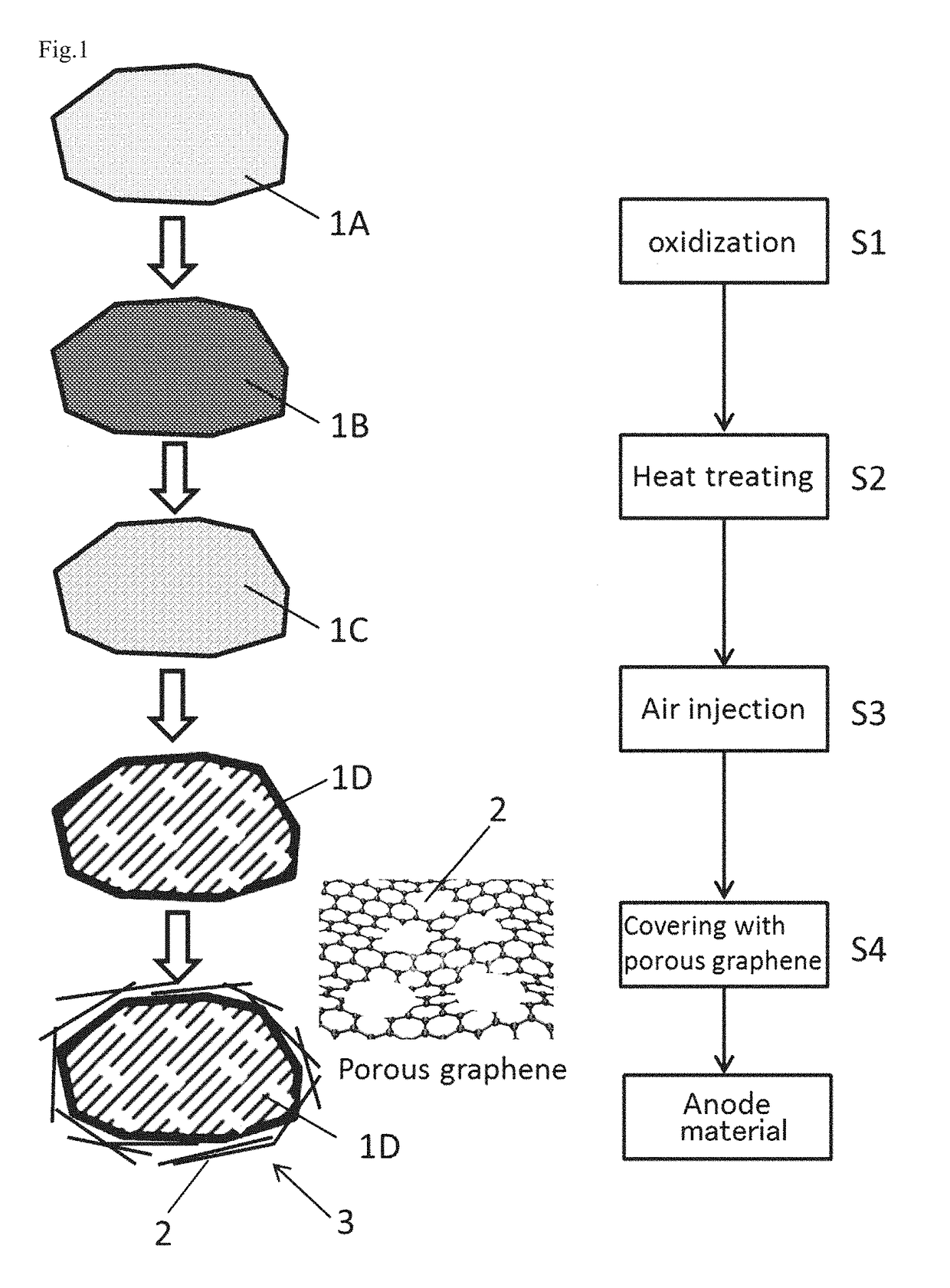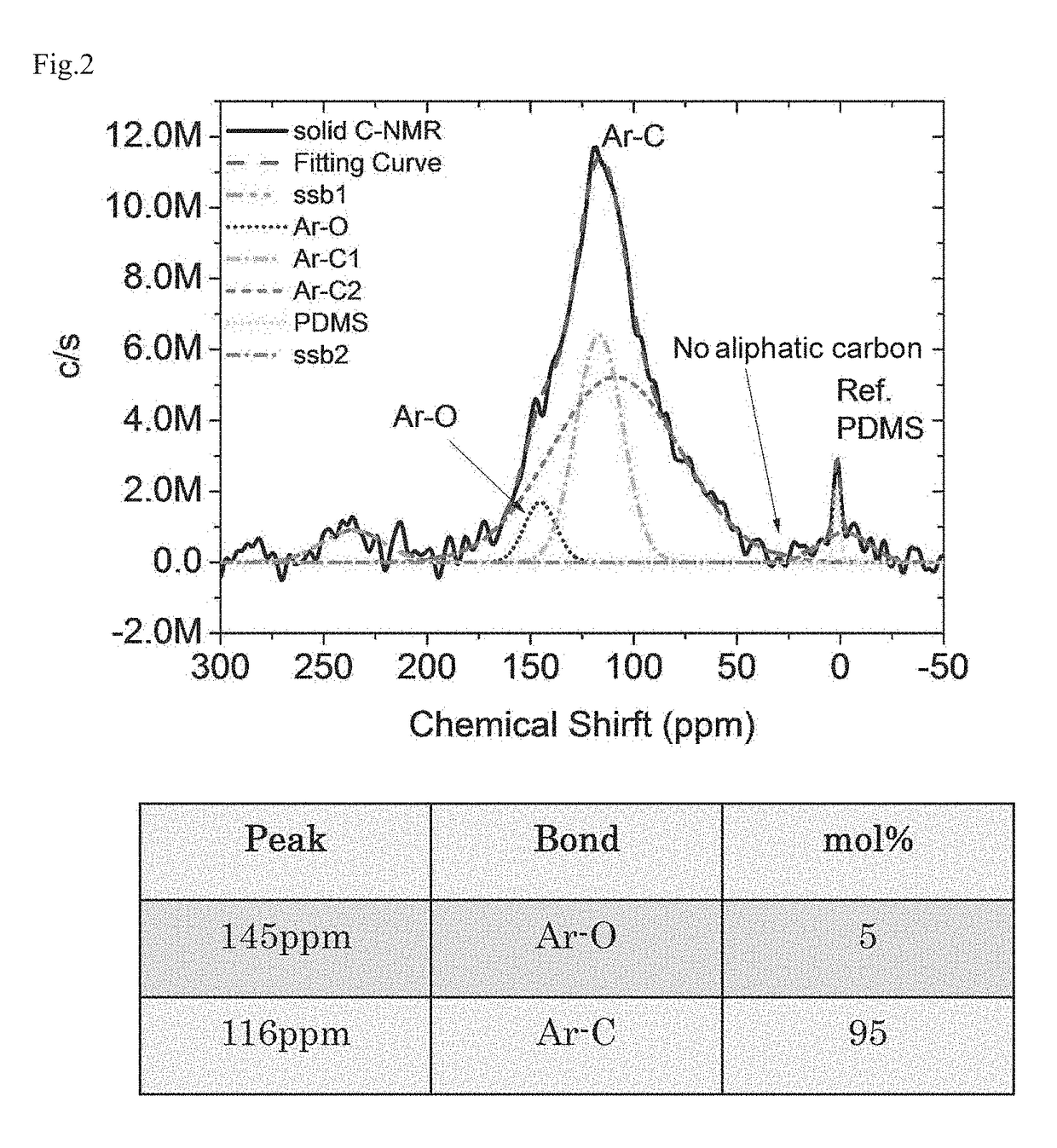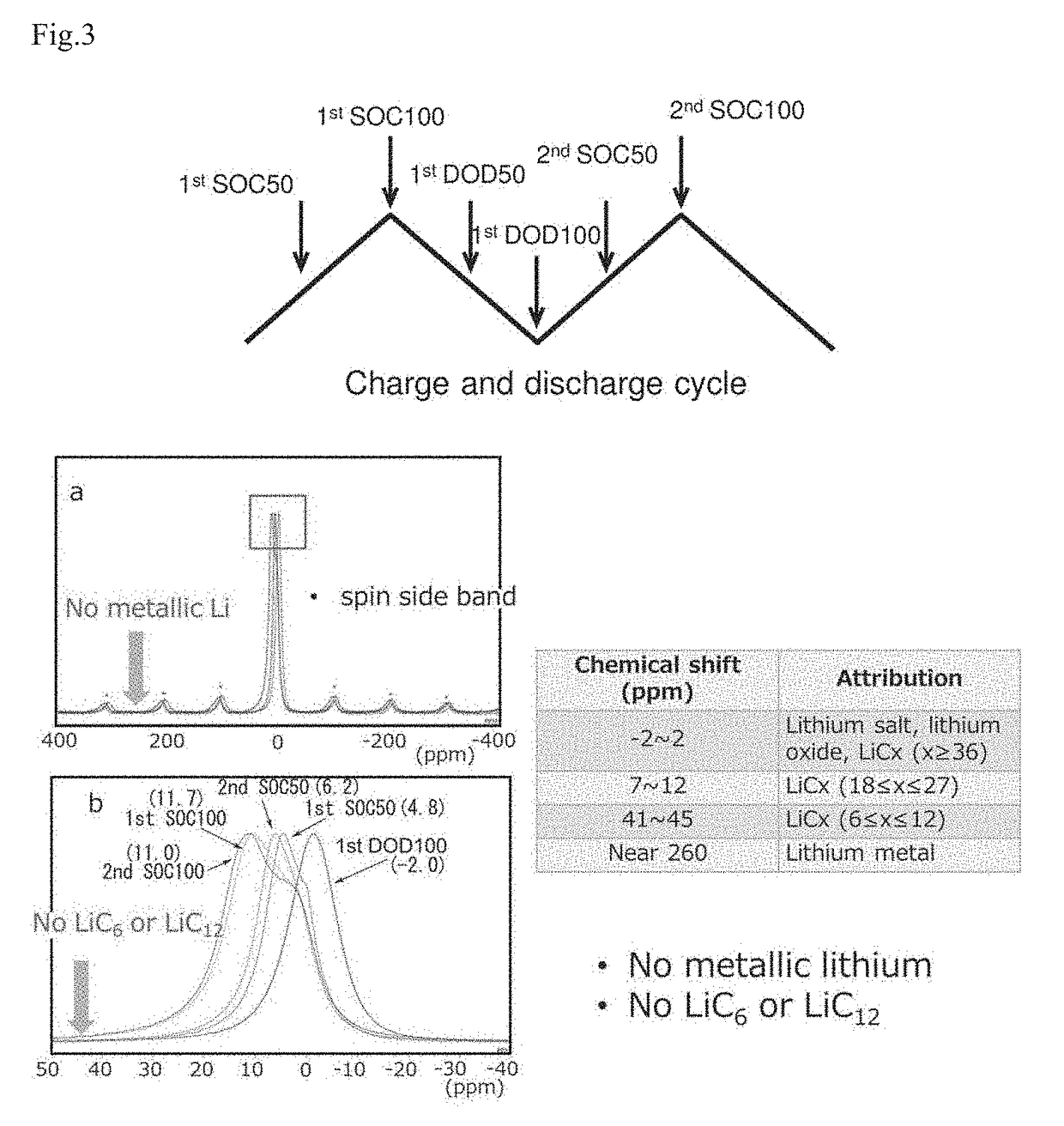Hierarchical oxygen containing carbon anode for lithium ion batteries with high capacity and fast charging capability
a lithium ion battery, oxygen-containing carbon technology, applied in the manufacturing process of electrodes, cell components, electrochemical generators, etc., can solve the problems of battery only lasting one day, 372 mah/g, cost, safety and cycle life of current electrode materials, etc., to achieve fast charging and high capacity
- Summary
- Abstract
- Description
- Claims
- Application Information
AI Technical Summary
Benefits of technology
Problems solved by technology
Method used
Image
Examples
example 1
[0056]10 g of granulated graphite (the material Comparative Example 1) was added to 100 ml fuming HNO3 in a beaker with magnetically stirring on an ice bath. Then, 85 g of KClO3 was added thereto. The resultant mixture was further stirred for 48 h on the ice bath and then heated at 60° C. for 10 h. After that, the thick paste was diluted with deionized water and filtrated off in vacuum. Thus treated graphite was then heat treated under N2 atmosphere at 800° C. for 4 h. Then the dry air was injected to the atmosphere with flow rate of 5 L / min and the sample was cooled down to room temperature. This material was used as a material of Example 1. The material was evaluated by 13C-NMR analysis and the results are shown in FIG. 2. Further, the material was subjected to a lithium intercalation test. The electrodes with as synthesized materials were assembled with a lithium metal coated cooper foil as a half cell. 1M LiPF6 in EC / DEC (3:7) is used as the electrolyte. The cells were charged o...
example 2
[0057]10 g of granulated graphite (the material of Comparative Example 1) was added to 100 ml fuming HNO3 in a beaker with magnetically stirring on an ice bath. Then, 85 g of KClO3 was added thereto. The resultant mixture was further stirred for 48 h on the ice bath and then heated at 60° C. for 10 h. After that, the thick paste was diluted with deionized water and filtrated off in vacuum. Thus treated graphite was then heat treated under N2 atmosphere at 800° C. for 4 h. Then the dry air was injected to the atmosphere with flow rate of 1 L / min and the sample was cooled down to room temperature. This material was used as a material of Example 2.
example 3
[0058]10 g of granulated graphite (the material of Comparative Example 1) was added to 100 ml fuming HNO3 in a beaker with magnetically stirring on an ice bath. Then, 85 g of KClO3 was added thereto. The resultant mixture was further stirred for 48 h on the ice bath and then heated at 60° C. for 10 h. After that, the thick paste was diluted with deionized water and filtrated off in vacuum. Thus treated graphite was then heat treated under N2 atmosphere at 800° C. for 4 h. Then the dry air was injected to the atmosphere with flow rate of 10 L / min and the sample was cooled down to room temperature. This material was used as a material of Example 3.
PUM
| Property | Measurement | Unit |
|---|---|---|
| size | aaaaa | aaaaa |
| thickness | aaaaa | aaaaa |
| particle size | aaaaa | aaaaa |
Abstract
Description
Claims
Application Information
 Login to View More
Login to View More - R&D
- Intellectual Property
- Life Sciences
- Materials
- Tech Scout
- Unparalleled Data Quality
- Higher Quality Content
- 60% Fewer Hallucinations
Browse by: Latest US Patents, China's latest patents, Technical Efficacy Thesaurus, Application Domain, Technology Topic, Popular Technical Reports.
© 2025 PatSnap. All rights reserved.Legal|Privacy policy|Modern Slavery Act Transparency Statement|Sitemap|About US| Contact US: help@patsnap.com



